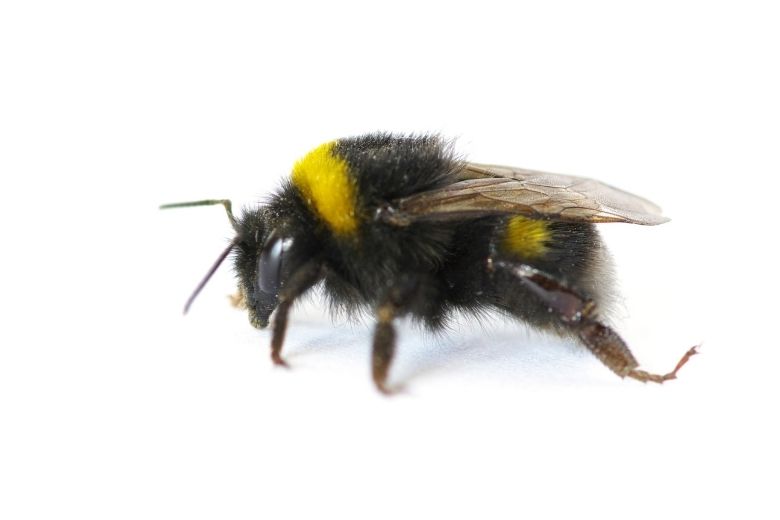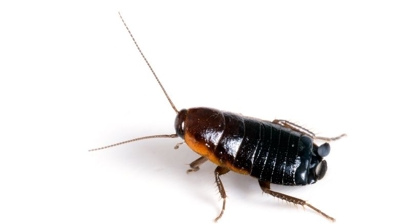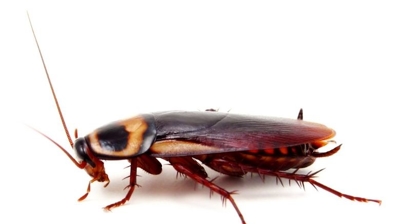
Bumblebee Control Services

Bumblebees
Bumblebees are not inherently dangerous to humans, and they are generally not aggressive. They do have the capability to sting, but they will only do so when they feel threatened or provoked. Here are some important points to consider regarding bumblebee safety:
- Stinging Behavior: Bumblebees will typically only sting if they perceive a threat to themselves or their nest. Common situations that may trigger a sting include accidentally squeezing or handling a bumblebee, disturbing their nest, or stepping on one.
- Defensive Nature: Bumblebees are not naturally aggressive and are much less likely to sting than some other stinging insects, like wasps and hornets. Their primary goal is to forage for nectar and pollen and maintain their colony.
- Multiple Stings: Unlike honeybees, bumblebees can sting multiple times without losing their stinger, so they may sting more than once when they feel threatened.
- Allergies: For individuals with allergies to bee stings, a bumblebee sting can be a serious medical concern. Allergic reactions can range from mild discomfort to severe anaphylaxis, so people with known bee sting allergies should take extra precautions.
Bumblebees are not inherently dangerous and are generally more interested in foraging for nectar and pollen than in stinging humans. Respecting their space and being cautious around them can help minimize the risk of stings, and their importance in pollination underscores the need to protect and conserve these valuable insects.
Learn more: Do Bumble Bees Bite? || Bumble Bees Sting || What Do Bumble Bees Look Like? || What Do Bumble Bees Eat?
Bumblebee Removal
There are a few specific cases where managing or relocating a bumblebee nest becomes important:
Bumblebees are generally beneficial:
- Excellent pollinators of fruit, vegetables, and native plants
- Non-aggressive compared to wasps and hornets
- Declining populations, making conservation important
- Rarely a structural threat—they don’t chew wood or build large nests
When removing or relocating them does matter
While you normally want to leave them alone, intervention is appropriate when:
- The nest is in a high-traffic area: If a colony forms right by a front door, a walkway, a children’s play area, or near pets, it increases the chance of accidental disturbance and stings.
- Someone nearby has a sting allergy: Even though bumblebees are calm, a single sting can be dangerous for an allergic person. In allergy-sensitive households, removal or relocation becomes a priority.
- They’ve nested inside insulation or voids: This is less common, but sometimes they occupy wall cavities, attic insulation, and crawlspaces. In confined spaces, bees can become more defensive, and access for repair or pest-control work can become challenging.
- The nest’s size or activity level becomes disruptive: A mature colony can generate steady traffic in a concentrated area, creating conflict between human activity and the bees’ flight path.
Our team typically recommends relocating bumblebees rather than exterminating them, unless there’s an unavoidable safety hazard. Many states and countries strongly encourage protection of native bumblebee species.
Learn more: How To Get Rid Of Bumblebees
Bumblebee Control
Hiring our professional pest control for bumblebees is important because while bumblebees are beneficial pollinators, they can also create serious risks when nesting too close to homes, businesses, or high-traffic areas. Attempting to remove them yourself can be dangerous, as bumblebees are highly defensive when their nest is disturbed and can deliver painful stings. Unlike honeybees, bumblebees can sting multiple times, posing health risks to individuals who are allergic or sensitive to bee venom.
Our professionals are trained to identify the nest location, evaluate the risks, and determine the safest, most effective course of action. We use specialized techniques to remove or relocate the nest responsibly, minimizing harm to the bees while protecting people and property. Our professionals will prioritize bee-friendly solutions that balance safety with environmental responsibility.
Ultimately, hiring our pest control experts ensures that the problem is handled safely, effectively, and legally—preventing injuries, avoiding costly damage to structures, and reducing the chance of the bees returning.
Bumblebee Exterminators
When the issue is specifically bumblebees there are several reasons a homeowner is better off hiring our local exterminators (who practice bee-friendly removal whenever possible) rather than a large national brand. Here’s why:
Our local team understands native bee species
Bumblebee species vary by region, and our local team:
- Knows which species are protected
- Can recognize whether the colony is harmless, endangered, or relocatable
- Understands seasonal patterns, nesting habits, and regional regulations
National chains tend to use broad, standardized protocols that may not account for these nuances.
More flexible, humane solutions
Bumblebees almost always should be relocated, not exterminated. Our local exterminators:
- Work with local beekeepers and wildlife specialists
- Offer low-impact removal rather than standard pesticide treatments whenever practical
- Customize the approach to preserve pollinators whenever possible
Big companies often default to chemical-based service protocols that aren’t ideal for bees.
Faster response and better site-specific assessment
Bumblebee issues are often urgent only when the nest is in a high-traffic area. Our local technicians can:
- Arrive quickly
- Inspect the exact placement of the nest
- Evaluate whether removal is truly needed
Large companies may schedule days out, and their technicians often follow rigid checklists rather than on-the-spot judgment.
Better safety outcomes
Because bumblebees are defensive only when disturbed, proper handling matters. Our local specialists:
- Spend more time assessing how to access the nest without provoking the colony
- Have experience working in older homes, sheds, and specific neighborhood conditions
- Use minimal-disturbance techniques that reduce sting risk for the homeowner and technician alike
Support for local ecosystems
Our local exterminators partner with:
- Local beekeepers
- Wildlife rehab groups
- Community conservation organizations
This helps protect declining pollinator populations—something national companies rarely integrate into their service model.
Where Are Bumblebees Found?
Bumblebees can be found in a variety of habitats, primarily in North America, Europe, and some parts of Asia. They are adaptable insects, and their specific locations can vary depending on factors such as the bumblebee species and the time of year. Here are some common places where you might find bumblebees:
- Gardens: Bumblebees are often found in gardens where they forage for nectar and pollen from flowering plants. They are important pollinators for many garden crops and flowers.
- Wildflower Meadows: Bumblebees thrive in wildflower meadows and grasslands where they can access a diverse range of nectar and pollen sources.
- Farms: Bumblebees are important for the pollination of agricultural crops. They can be found on farms where they help with the pollination of fruits, vegetables, and other crops.
- Woodlands: In wooded areas, bumblebees can be found visiting flowers that grow on the forest floor and in clearings.
- Urban and Suburban Areas: Bumblebees are adaptable and can be found in urban and suburban environments where they visit gardens, parks, and green spaces.
- Near Water Sources: Bumblebees need access to water, so you may find them near ponds, streams, or other water sources.
- Nesting Sites: Bumblebee nests can be found in various locations, including old rodent burrows, hollow trees, abandoned bird nests, and even underground. However, bumblebee nests are generally well hidden and not easily spotted.
- Mountainous Areas: In some regions, bumblebees can be found in mountainous terrain, where they visit alpine flowers.
- Hedgerows: Bumblebees are often seen foraging in hedgerows, where a variety of flowering plants can be found.
- Conservation Areas: Some bumblebee species are found in protected natural areas and reserves, especially those that are rare or threatened.
Bumblebee distribution can vary by region and season. They are more active during the warmer months when flowers are in bloom and provide ample food sources. To attract and support bumblebees, consider planting a variety of nectar-rich flowers in your garden, as this can create a welcoming environment for these important pollinators.
Bumble Bee Life Cycle
The life cycle of bumblebees is a fascinating and complex process that includes multiple stages, from the initial formation of a colony to the eventual production of new queens. Here is the life cycle of bumblebees:
- Queen Emergence and Foraging (Spring): Bumblebee colonies begin in the spring when a mated queen, which has overwintered, emerges from her hibernation site. The queen searches for a suitable nesting site and starts to forage for nectar and pollen to nourish herself.
- Nest Foundation (Spring): Once the queen has gathered enough resources, she constructs a small waxen pot and lays her first batch of eggs. These eggs hatch into worker bees, which are all female and will help the queen expand the nest and forage for food.
- Colony Growth (Spring to Summer): As the worker bees grow, the colony expands, and the queen continues to lay eggs. The colony's population can vary in size but typically ranges from dozens to a few hundred individuals. Workers are responsible for foraging, tending to the brood, and defending the nest.
- Production of Reproductive Offspring (Summer): As the colony grows, the queen starts to lay eggs that will develop into new queens and male bees (drones). These eggs receive special treatment and are fed more royal jelly than the worker bee eggs. Drones are reproductively functional males, and new queens will be potential founders of future colonies.
- Colony Peak (Summer): Bumblebee colonies reach their peak size during the summer, with a mix of workers, drones, and new queens. The colony is focused on gathering food and reproducing. Worker bees forage for nectar and pollen.
- Colony Decline (Late Summer to Early Fall): As summer transitions to fall, the colony's resources start to diminish, and there is a reduction in the number of new eggs. Drones and new queens leave the nest to mate. The original queen and most of the worker bees die off, resulting in the eventual collapse of the colony.
- New Queen Hibernation (Late Fall to Early Spring): The newly mated queens find protected locations to hibernate during the winter, such as underground or in leaf litter. They enter a state of dormancy, awaiting the arrival of spring.
- Repeat Cycle (Next Spring): The cycle begins again the following spring when the mated queens emerge from hibernation to establish new colonies.
The life cycle of bumblebees can vary depending on the species and environmental conditions. The timing of these stages may differ by region and climate, with some species having slightly different behaviors and schedules. Bumblebees are vital pollinators, and understanding their life cycle is crucial for their conservation and the pollination of many plants and crops.

Hear From Our Happy Customers
-
"Great Communication"
Tech was on time, communication was great, and he accommodated my needs.
- Alonzo W. -
"Very Knowledgeable"
The tech that arrived was courteous, professional, and very knowledgeable. He was Great.
- Uerial I. -
"Fantastic & Patient"
Jarvis was fantastic and patient. He answered my questions with an in-depth explanation and addressed all of my areas of concern. Would love for him to be my assigned tech going forward. Well done!
- Yonnette M. -
"Professional & Considerate"
I’m pleased with Miche services. Jarvis came today. Professional and considerate. Thank you!
- Judy B. -
"Wonderful Service"
Wonderful service. Jarvis is great. Took care of everything I needed. Thank you!
- Henry P. -
"Exceeds Expectations"
I can’t say enough positive things about this company... The tech that came out, Jarvis went above and beyond my expectations. Thank you guys, I will continue using your services.
- Jake M.



